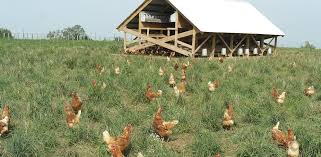Perspective analysis of small–scale flock production as a tool for poverty reduction in delta south agricultural zone of delta state, Nigeria
Abstract
The study was focused on perspective analysis of small–scale flock production as a tool for poverty reduction in Delta South Agricultural Zone of Delta State, Nigeria. The sampling procedure employed was a multistage sampling technique to achieve a sample of 220 rural households. The study clearly showed that most respondents were a landlord with a mean age of 44 years. The study also revealed that most respondents were illiterate with a primary school level of education mostly headed by male residential ownership with a household size of nine persons. The respondents mostly derived their incomes from crops, fish, flock, non-farm activities, and wages and salaries. The mean annual income of N26,300 from flock production contributed about 42.7% of the total respondents’ annual income of N61,550. This clearly shown that flock production could be used in rural households’ poverty reduction from its enormous contributions. The study recommends that government policies should be geared towards an increase in flock production by the provision of credit facilities and extension services in the rural poor.References
Adetimirin, O.T., 2000. Analysis of egg marketing I Agege Local Government Area of Lagos State., Unpublished B. Technology Thesis, Department of Agricultural Economics and Extension, Ladoke Akintola University of Technology, Ogbomoso.
Esobhawan A.O. Ojo,S.O., Ikheloa, E.E., 2008. Profitability, input elasticity and return to scale of Agricultural production in Lagos State. Proceedings of 4th Annual Conference of Agriculture in Nigeria, Port Harcourt, September, pp 206-208.
FAO, 2006a. Livestock’s long shadow- Environmental issues and options, edited by H. Steinfield, P. Gerber, T. Wassenaar, V. Castel, M. Rosales & C. de Haan. Rome
FAO, 2009b. The State of Food and Agriculture 2009 – Livestock in balance. Rome
FAO, 2011 – World Livestock 2011 – Livestock in Food Security. Rome
FAOSTAT, 2003. FAO Statistics database on the World Wide Web. http://apps.fao.org/
IFAD, 2010. – AAVV. A viable food future – Part II. The Development Fund, Norway.
ILRI, 2002. “Mapping Poverty and Livestock in the developing world. Nairobi, International Livestock Research Institute.
Okoli, I.C., Anyaegbulam C.N., Etuk E.N., Uchegbu M.C. and Udedibe A.B.I. 2004, Socio-Economics Characteristics of Poultry Business Enterpreneurs in Imo State Nigeria.
Rallof J, 2002. Livestock definitions “Science News Vol161 (1) pp10.
World Bank, 2007. “World Bank Development Report 2008, Agriculture for Development Washington D.C.

Copyright (c) 2021 Transylvanian Review

This work is licensed under a Creative Commons Attribution-NonCommercial-NoDerivatives 4.0 International License.



